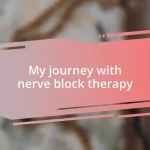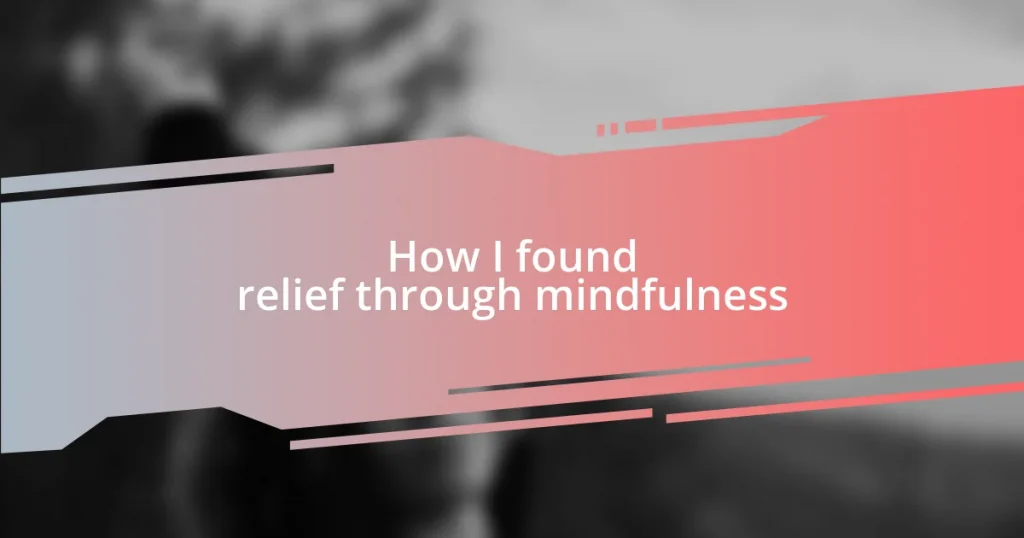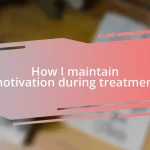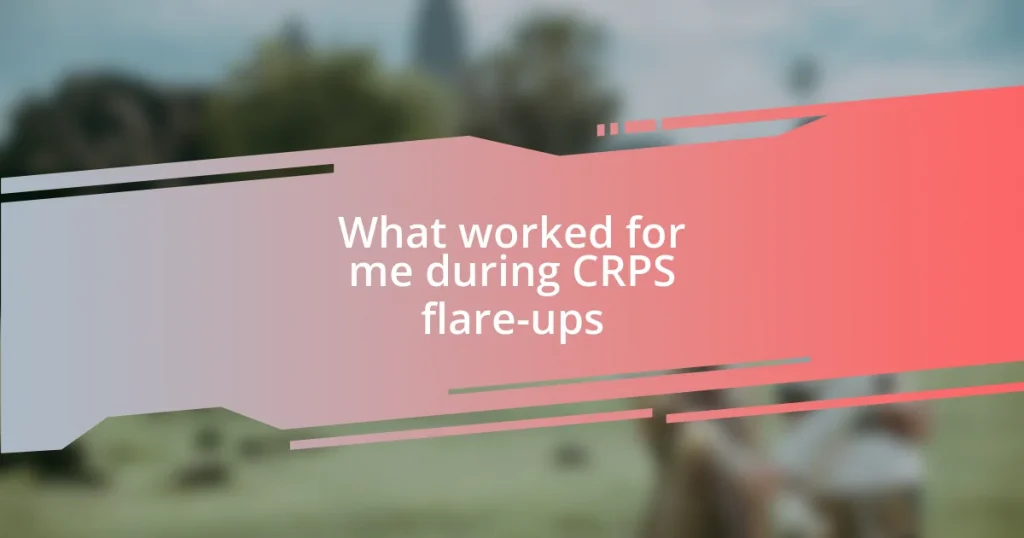Key takeaways:
- Mindfulness promotes awareness of thoughts and emotions, fostering self-compassion and emotional regulation, which can transform challenging situations into opportunities for growth.
- Incorporating simple mindfulness techniques, such as breath focus and mindful walking, into daily routines can provide significant stress relief and enhance clarity.
- Tracking progress and celebrating small successes in mindfulness practice reinforces motivation and strengthens connections with others through shared experiences.
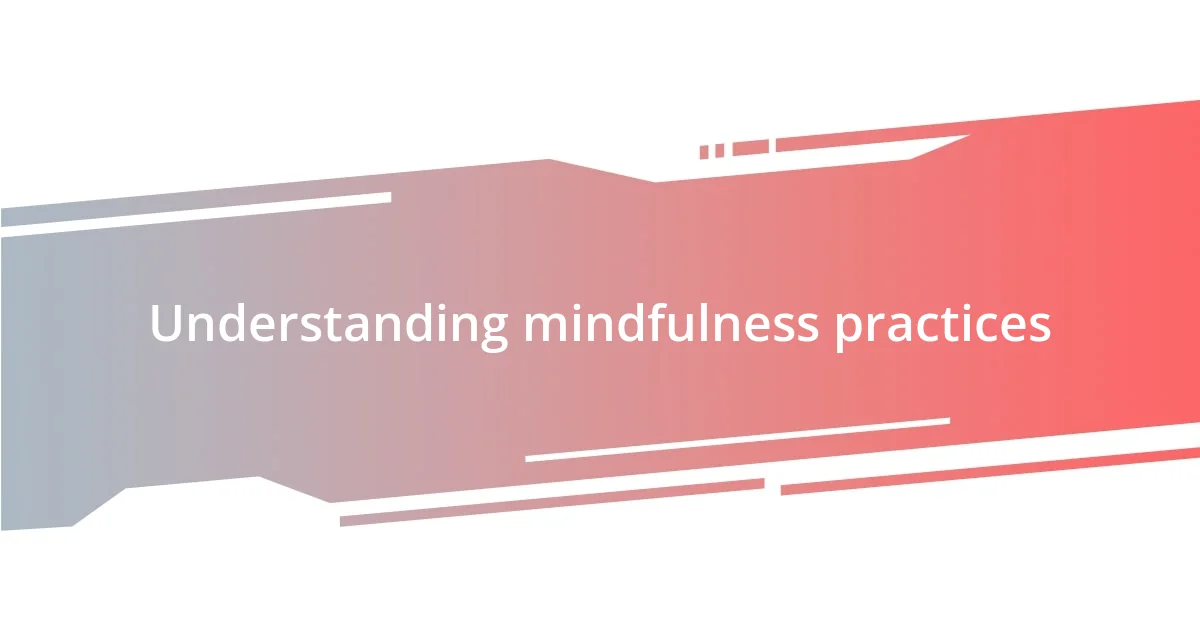
Understanding mindfulness practices
Mindfulness practices invite us to pause and become aware of our thoughts, emotions, and surroundings. I remember the first time I sat quietly and focused on my breath; the simple act of inhaling and exhaling felt like a revelation. In that moment, I realized how often I’d rushed through life, oblivious to the world around me. Have you ever experienced a similar insight?
Another essential aspect of mindfulness is observing without judgment. It’s about noticing my thoughts and feelings as they arise, rather than getting swept away by them. I vividly recall a time when I was overwhelmed with anxiety. Instead of resisting those feelings, I simply acknowledged them, which surprisingly brought me a sense of relief and clarity. Can you remember a time when embracing an uncomfortable feeling actually led to a breakthrough?
Mindfulness practices also encourage us to cultivate compassion for ourselves and others. When I regularly practiced loving-kindness meditation, I noticed a profound shift in how I viewed challenges in my life. It’s fascinating how offering ourselves kindness can open the door to greater empathy and understanding. How might your perspective change if you approached challenges with a lens of compassion instead of criticism?
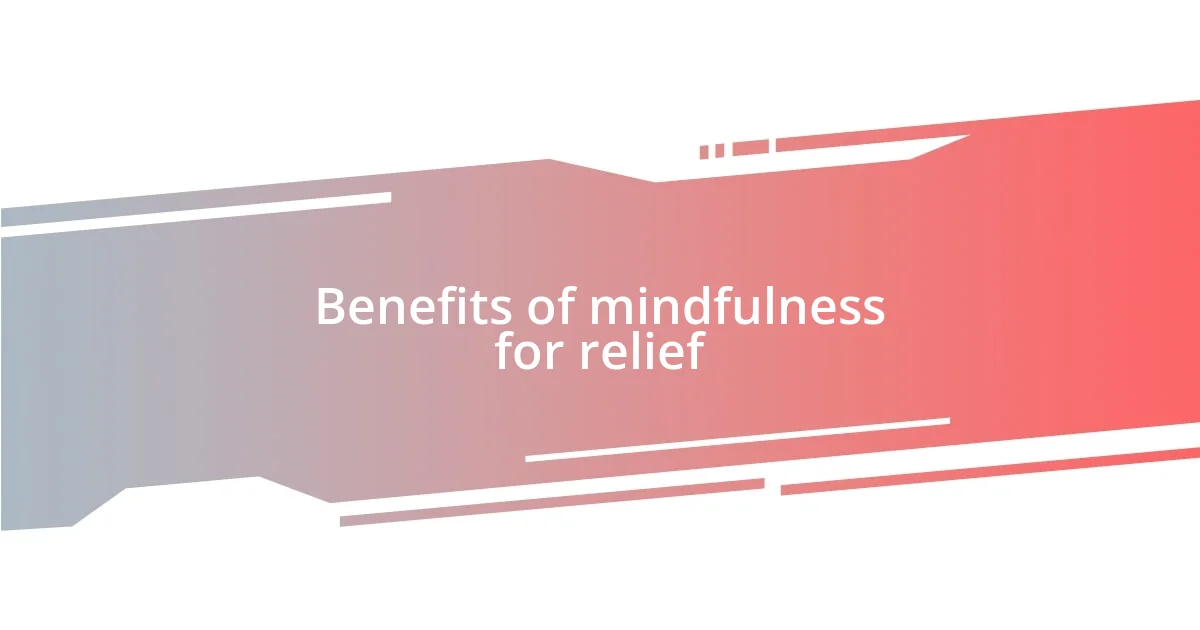
Benefits of mindfulness for relief
Mindfulness has a remarkable ability to provide relief by promoting a sense of calm and clarity. I often find that during my hectic days, taking just a few moments to practice mindfulness can significantly lower my stress levels. I once had a particularly overwhelming week, and a simple five-minute session of deep breathing helped me feel re-centered. Have you tried taking a moment for yourself when life gets chaotic?
Another benefit of mindfulness is its impact on emotional regulation. I’ve learned that by observing my feelings without judgment, I can step back from intense emotional reactions. There was a time when I reacted impulsively during a heated discussion, but after practicing mindfulness, I found I could pause and respond thoughtfully instead. This not only helped the situation but also left me feeling more in control. Can you think of a time when pausing could have changed the outcome of a conversation?
Furthermore, mindfulness fosters resilience by helping us to reframe our thoughts during challenging times. For instance, I remember struggling with a personal setback that left me feeling defeated. By integrating mindfulness into my daily routine, I started to view obstacles as opportunities for growth instead of insurmountable barriers. This shift in perspective not only alleviated my stress but also sparked a newfound motivation to move forward. Isn’t it empowering to think that our mindset can transform our experiences?
| Benefit | Explanation |
|---|---|
| Stress Reduction | Mindfulness promotes relaxation, allowing individuals to lower their stress levels quickly. |
| Emotional Regulation | It helps in observing emotions without judgment, improving our response to situations. |
| Increased Resilience | Mindfulness encourages a shift in perspective, viewing challenges as growth opportunities. |
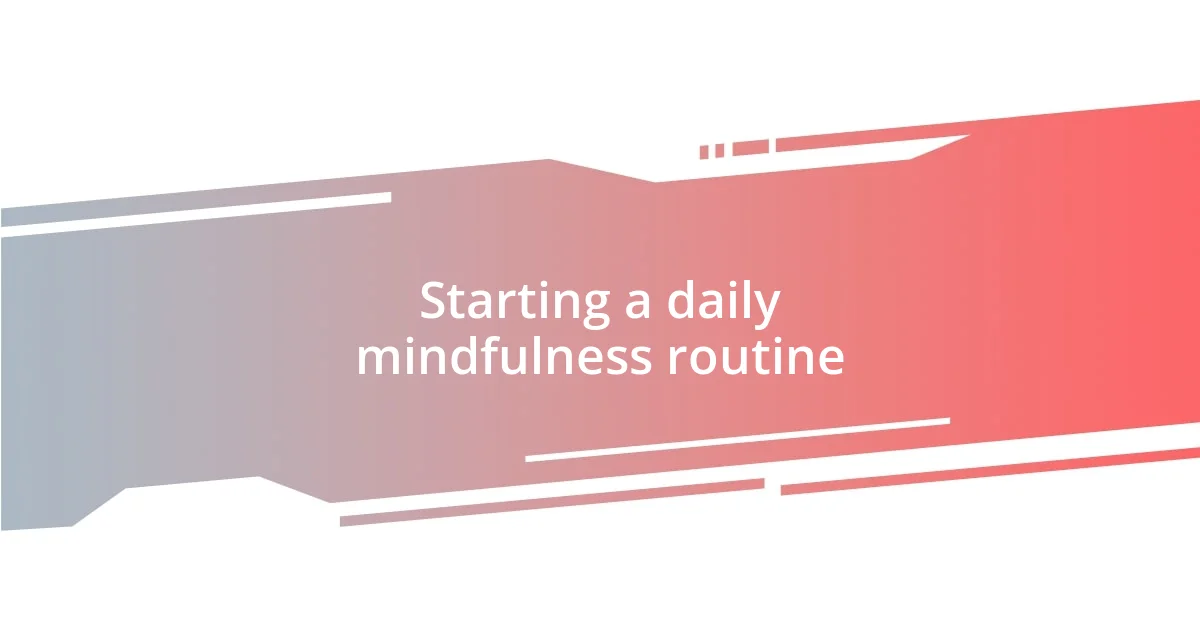
Starting a daily mindfulness routine
Starting a daily mindfulness routine doesn’t have to be daunting. I started mine with just a few minutes each morning, often paired with my first cup of coffee. I remember sitting at my kitchen table, closing my eyes, and really tuning into the sounds of the world outside, from birds chirping to distant traffic. Those brief moments turned out to be my favorite part of the day, a pocket of peace I could always return to.
To kickstart your own routine, here are some simple steps you might consider:
- Set a Consistent Time: Choose a specific time each day that works for you, like morning or just before bed.
- Start Small: Begin with just 5 minutes, gradually increasing the time as you feel comfortable.
- Find a Comfortable Space: Create a cozy spot where you won’t be disturbed, making it a special ritual.
- Focus on Your Breath: Simply paying attention to your breathing can anchor you in the present moment.
- Use Guided Meditations: Apps or online resources can offer structured support, making it easier to get started.
Building this routine became my lifeline, especially during a particularly stressful period in my life. While I was navigating a challenging project at work, I found that moments of mindfulness helped clear my head and brought clarity to my thoughts. It was like hitting a reset button, allowing me to step back and refocus. I’d encourage you to see what magic a mindfulness practice can bring to your day.

Techniques for mindfulness meditation
Mindfulness meditation can be practiced in various ways, and each technique has its own unique benefits. One of my favorites is body scan meditation, where I take time to mentally travel through each part of my body. I remember a moment lying on my living room floor, focusing on my toes and slowly moving up to my head, noticing any tension or discomfort. This practice not only helps me relax but also deepens my connection with my body. Have you ever really listened to what your body is feeling?
Another effective technique is visualization. I often picture a serene landscape—perhaps a tranquil lake or a peaceful forest. As I immerse myself in this mental image, I can almost feel the soft breeze and hear the gentle rustle of leaves. This method helps create a sanctuary in my mind, providing a much-needed escape from stress. Have you tried envisioning a place that brings you peace? I find that returning to such vivid imagery can be incredibly grounding.
Finally, I sometimes engage in mindful walking, which adds movement to my meditation practice. I remember a rainy afternoon when I stepped outside, letting the cool droplets kiss my skin. As I walked slowly, my focus shifted to each step, the feeling of my feet connecting with the ground, and the rhythm of my breath. There’s something magical about being present in the moment, isn’t there? Mindful walking transforms a simple stroll into an opportunity for reflection and peace, allowing me to appreciate the beauty of the world around me.
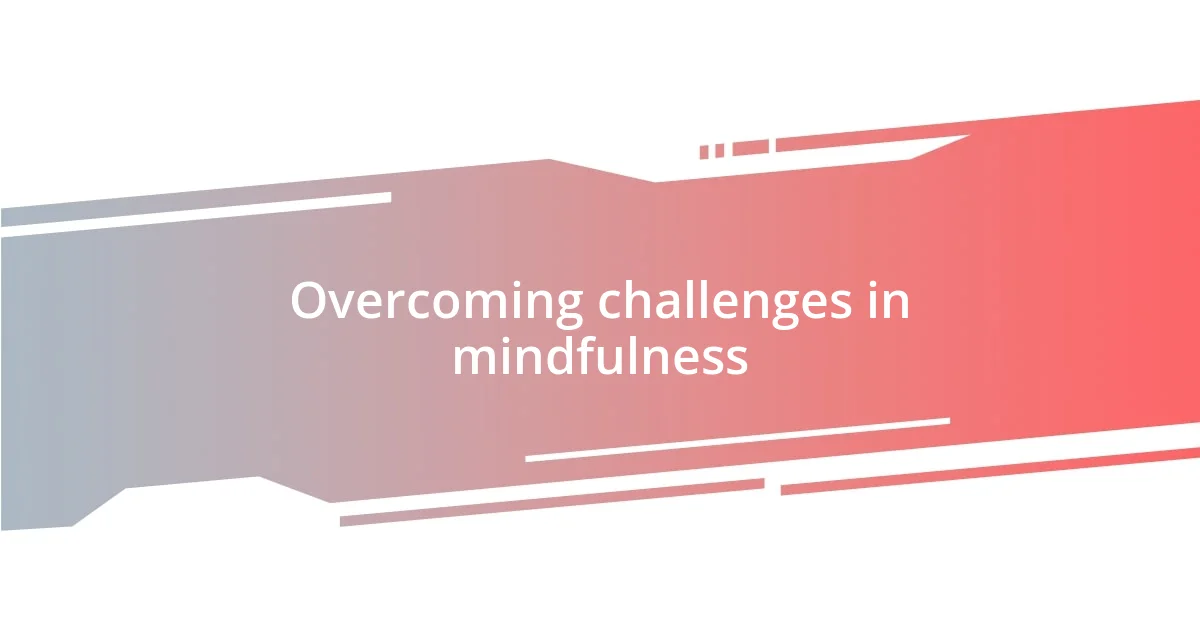
Overcoming challenges in mindfulness
Overcoming obstacles in mindfulness practice can often feel like a personal journey filled with highs and lows. I vividly recall struggling to find quiet moments in my chaotic day. It felt like my thoughts were racing a mile a minute, and I wondered, “Can I really pause when everything else around me is so loud?” I learned that acknowledging these interruptions was the first step toward overcoming them. Rather than fighting against my distractions, I began to embrace them, simply letting the thoughts come and go while focusing on my breath.
Another challenge I faced was feeling unworthy of stillness, as if my busy schedule invalidated the time I wanted to allocate for mindfulness. How could I take a break when there were tasks piling up? I realized that giving myself permission to pause wasn’t selfish—it was essential. I gradually accepted that those moments of mindfulness could actually enhance my productivity, allowing me to return to my tasks with a clearer mind. It was a profound shift, akin to giving myself a mental hug, reassuring me that self-care is not a luxury but a necessity.
Sometimes, I encountered skepticism from friends and family who didn’t understand why I was pursuing mindfulness. “Does that really work?” they’d ask, raising their eyebrows in disbelief. Initially, it made me second-guess my commitment. Yet, as I experienced the benefits—like improved focus and reduced stress—I felt a sense of pride. I started sharing my journey, inviting them to join me for a quick meditation session. I found that sometimes, simply sharing my experiences helped bridge the gap between skepticism and understanding, showing others that mindfulness is a path worth exploring.
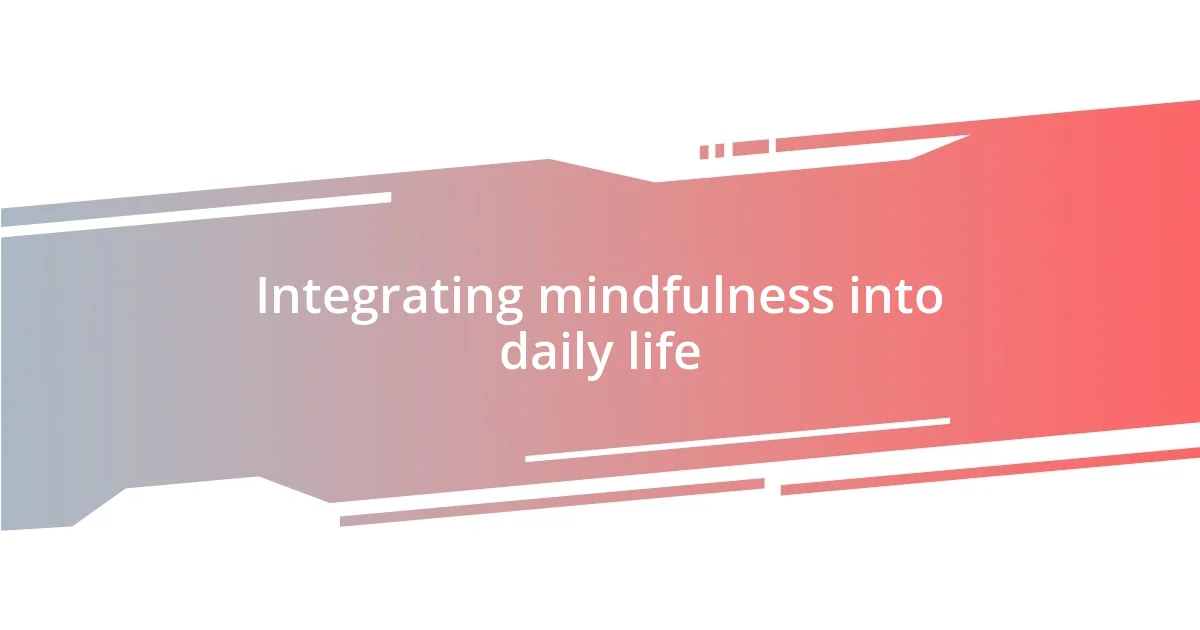
Integrating mindfulness into daily life
Integrating mindfulness into my daily life has truly become a tapestry woven with intention and presence. For instance, I’ve started infusing mindfulness into the simplest of tasks, like washing dishes. Instead of letting my mind race ahead to the next chore, I focus on the warm water running over my hands and the sound of the plates clinking together. Can you imagine how transformative that can feel? It turns a mundane task into a moment of clarity and connection.
On particularly hectic days, I make it a point to set reminders on my phone for brief mindfulness breaks. I remember one day feeling overwhelmed and unable to concentrate. When my alert went off, I stepped away from my desk for just five minutes, took a few deep breaths, and observed the sounds around me. It was incredible how those few moments helped to refocus my mind. Have you ever taken a simple moment like that for yourself? It made all the difference, reminding me that even in chaos, peace is just a breath away.
Another powerful strategy I’ve adopted is creating a mindful morning routine. Instead of racing to my first meeting while gulping coffee, I allow myself a quiet period. I enjoy sitting with my coffee, savoring each sip, and setting intentions for the day. This practice has grounded me, providing a sense of purpose as I move into my daily tasks. I often ask myself, “What do I want to achieve today?” This small shift changes the way I approach the world, making each day feel more intentional. Have you considered how a mindful start could positively impact your day?
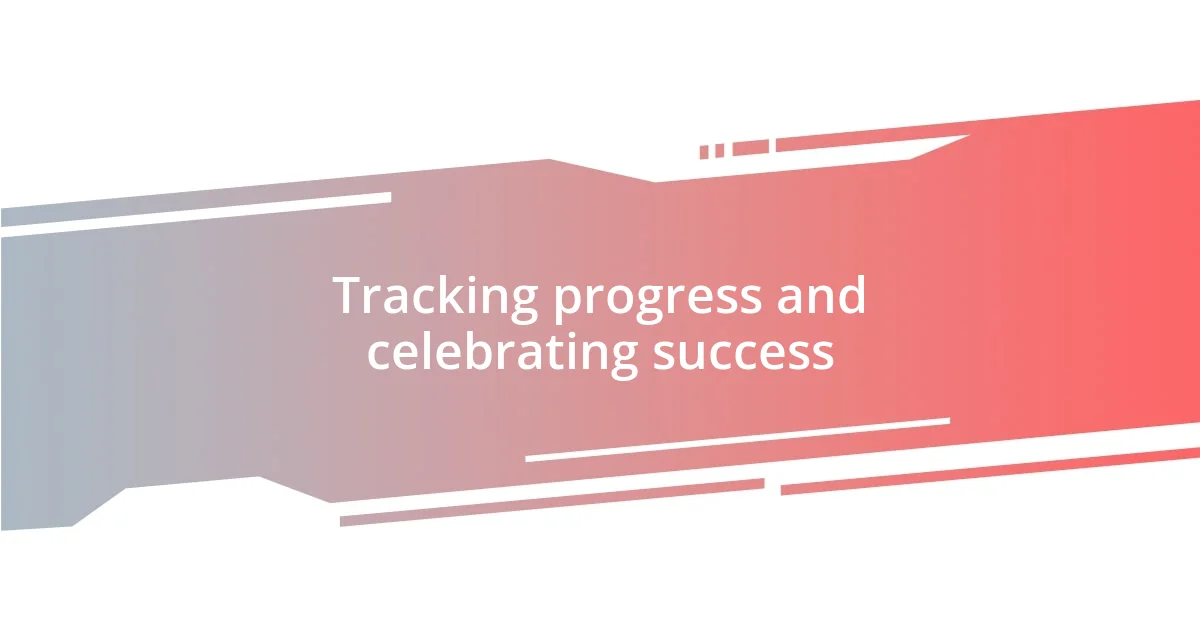
Tracking progress and celebrating success
Tracking my progress in mindfulness has become an enlightening experience. At first, I felt uncertain about whether I was truly making strides. But then I started keeping a simple journal. Each night, I’d jot down my thoughts and feelings about the day—was I more present during meals, or did I catch myself breathing deeply during stressful moments? It’s fascinating how seeing these small victories documented on paper can fuel my motivation. Have you ever tried writing down your progress?
Celebrating success, no matter how small, is essential in my journey. There were times I overlooked little wins, like choosing to take a mindful pause instead of scrolling through my phone. Once, after a week of consistent practice, I treated myself to a spa day. The feeling of accomplishment washed over me like the warm water in the massage chair. It was a reminder that mindfulness isn’t just about the practice; it’s a lifestyle shift worth celebrating. How do you reward yourself for personal growth?
I also found that sharing my milestones with friends has been incredibly rewarding. After I completed a month of daily meditation, I invited a couple of friends over for tea, where I shared my experiences and its impact on my life. The conversation blossomed into an inspiring exchange about our personal challenges. I believe that acknowledging our growth together builds a supportive community around mindfulness. Have you thought about the value of sharing your journey with others? It deepens connections and reinforces commitment, making the path feel a little lighter.








